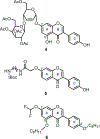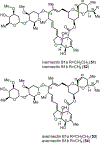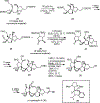Therapeutic vulnerabilities of cancer stem cells and effects of natural products
- PMID: 37103550
- PMCID: PMC10524555
- DOI: 10.1039/d3np00002h
Therapeutic vulnerabilities of cancer stem cells and effects of natural products
Abstract
Covering: 1995 to 2022Tumors possess both genetic and phenotypic heterogeneity leading to the survival of subpopulations post-treatment. The term cancer stem cells (CSCs) describes a subpopulation that is resistant to many types of chemotherapy and which also possess enhanced migratory and anchorage-independent growth capabilities. These cells are enriched in residual tumor material post-treatment and can serve as the seed for future tumor re-growth, at both primary and metastatic sites. Elimination of CSCs is a key goal in enhancing cancer treatment and may be aided by application of natural products in conjunction with conventional treatments. In this review, we highlight molecular features of CSCs and discuss synthesis, structure-activity relationships, derivatization, and effects of six natural products with anti-CSC activity.
Conflict of interest statement
Conflicts of interest
There are no conflicts to declare.
Figures

















References
-
- Bonnet D and Dick JE, Nature Medicine, 1997, 3, 730–737. - PubMed
-
- Lapidot T, Sirard C, Vormoor J, Murdoch B, Hoang T, Caceres-Cortes J, Minden M, Paterson B, Caligiuri MA and Dick JE, Nature, 1994, 367, 645–648. - PubMed
-
- O’Brien CA, Pollett A, Gallinger S and Dick JE, Nature, 2007, 445, 106–110. - PubMed
Publication types
MeSH terms
Grants and funding
LinkOut - more resources
Full Text Sources
Medical

